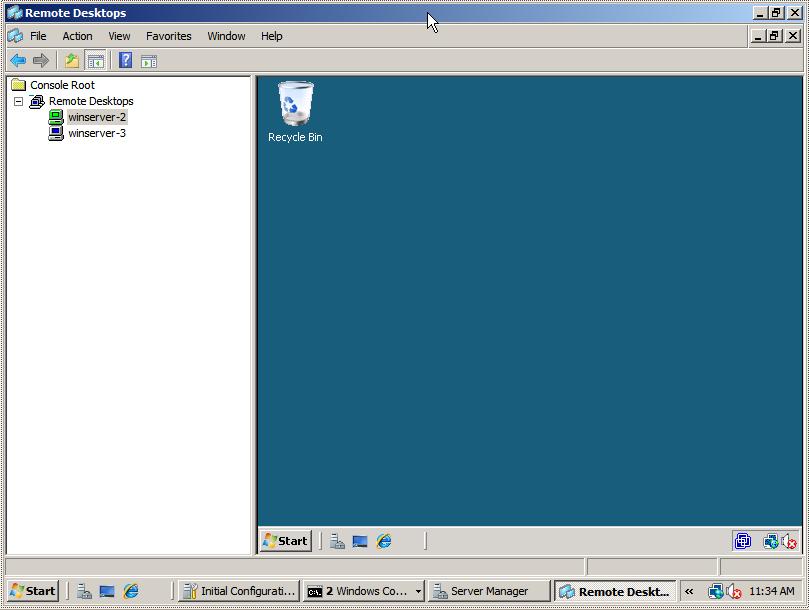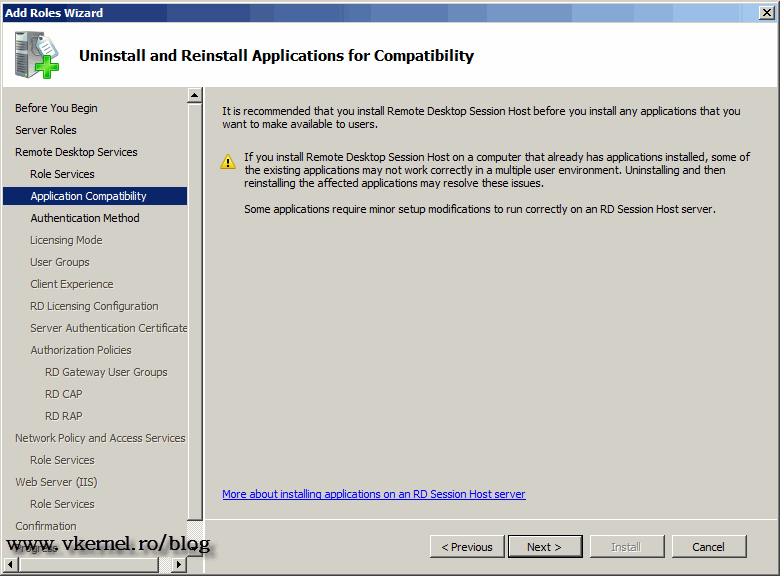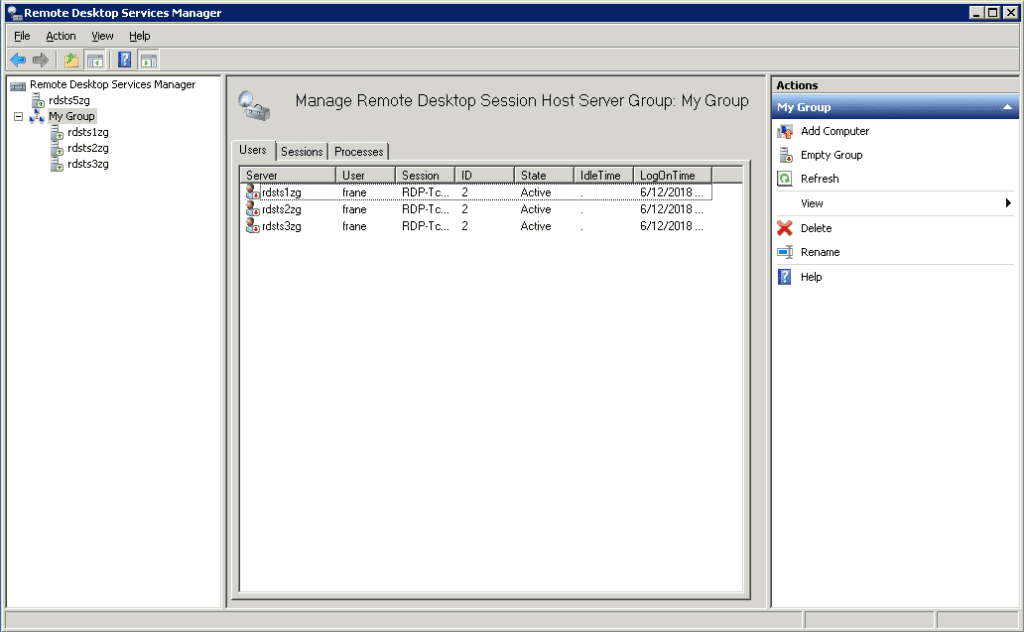Remote Desktop Services (RDS) is one of the roles that a Windows Server can have. You must install this role to set up an RDS host that runs Windows Server 2008 R2.
In Windows Server 2008 (not R2) the service is called Terminal Services, not Remote Desktop Services (that was changed in R2). If that is started, make sure terminal services connections are allowed in system properties, make sure your firewall allows TCP port 3389, and make sure the RDS role is not installed. Remote Desktop Licensing. This is the modern name of Terminal Server licensing server that also includes licensing for Windows Server. Remote Desktop Gateway. This provides a single connection point for clients to connect to a specific virtual desktop, remote app or Remote Desktop Session Host session. Remote Desktop Web Access.

- Verify that the RDS host is running Windows Server 2008 R2 Service Pack 1 (SP1).
- Verify that the RDS host is part of the Active Directory domain for the Horizon 7 deployment.
- Install the Microsoft hotfix rollup that is documented in http://support.microsoft.com/kb/2775511.
- Install the Microsoft update https://support.microsoft.com/en-us/kb/2973201.
Procedure
- Log in to the RDS host as an administrator.
- Start Server Manager.
- Select Roles in the navigation tree.
- Click Add Roles to start the Add Role wizard.
- Select the role Remote Desktop Services.
- On the Select Role Services page, select Remote Desktop Session Host.
- On the Specify Authentication Method page, select either Require Network Level Authentication or Do not require Network Level Authentication, whichever is appropriate.
- On the Configure Client Experience page, select the functionality that you want to provide to users.
- Follow the prompts and finish the installation.
If you plan to use HTML Access or scanner redirection, install the Desktop Experience feature. The steps for installing Desktop Experience differ on Windows Server 2008 R2 and Windows Server 2012 or 2012 R2.
Restrict users to a single desktop session. See Restrict Users to a Single Session.
In this blog post we will look at how to install and activate a RDS License Server. We will also review the two different types of CALs, and how to install CALs on the RDS License Server. And finally we will look at how to designate specific License Servers to RDS Session Host Servers, through Group Policy.
If you don’t have Remote Desktop Services Client Access Licenses (RDS CALs), your users will not be able to connect to a remote desktop session host server, after the initial grace period of 120-days expires. To install Remote Desktop CALs, you first need to install a Remote Desktop License Server. This is a role service of the Remote Desktop Services role on Server 2008 R2.
Also Citrix XenApp relies on a RDS license server. Because what XenApp essentially does, is to extend the capabilities of the Microsoft Remote Desktop session host server. Each time a user connects to a XenApp session, he is also connecting to a Remote Desktop Session. So you will need licenses for both XenApp and RDS.

1. Installing the Role Service
1.1 Start Server Manager, Click on Add Roles, and choose the Remote Desktop Services role
1.2 Click Next
1.3 Choose Remote Desktop Licensing
1.4 Review the text, but don’t make any choices, Click Next
1.5 Click Install.
1.6 Click Close, and that is pretty much it for the installation of the role service.
2. Activating the server
The license server must be activated to issue RD CALs.
2.1 Click Start → Administrative Tools → Remote Desktop Services → Remote Desktop Licensing Manager
2.2 Right click the server name, and choose Activate Server
2.3 Click Next
2.4 Choose desired connection method. I’m choosing Automatic connection, which connects to the Microsoft clearinghouse over the internet, by using https (port 443 obviously). If your license server does not have access to the internet, you can also choose to activate it through the web browser (of another computer, which is connected to the internet) or over telephone. Click Next
2.5 The license server will start locating a Microsoft Clearinghouse server
2.6 Then you are requested to provide some information about yourself. These four fields are required, so enter information for each field
2.7 These fields are optional. Click next when you are ready
2.8 The server will be activated
2.9 You can start the Install Licenses Wizard if you like from this page, but I chose not to
3. Types of CALs
There are two types of Client Access Licenses available for Remote Desktop Services.
Per Device CALs
These are permanent CALs assigned to any computer or device that connects to an RD Session Host Server more than once. The first time a computer or device connects to an RD Session Host, its by default issued a temporary license. The second time a computer or device connects to an RD Session Host, the license server issues it a permanent RD Per Device CAL, if the license server is activated and enough RD Per Device CALs are available.
Per User CALs
Per User CALs give users right to access Remote Desktop Services from any number of devices. They are not assigned to specific users permanently like Device CALs are to devices.

4. Install CALs
4.1 Right-click server, and choose Install Licenses
4.2 The same three connection methods that were available during activation of the server, are available now. The connection method you used during activation, is retained. Click Next
4.3 Choose appropriate License Program, and then click next. I chose Enterprise Agreement
4.4 The next few steps will depend on the license program you chose in the previous step. These are the steps for Enterprise Agreement
4.5 Enter Agreement number, and then click Next
4.6 Select Product Version, license type and quantity of licenses to install onto the license server. Then click Next to complete the license installation process.
The license server can now issue RD CALs to clients.
5. Specify Licensing Mode and License server
for RDS session Host Servers
5.1 Through RD Session Host Configuration Tool
5.1.1 Click Start → Administrative Tools → Remote Desktop Services → Remote Desktop Session Host Configuration
5.1.2 Right-click beneath Licensing, and choose Properties
Windows Server 2008 R2 Remote Desktop Services Licensing Crack
5.1.3 Choose appropriate licensing mode, and then click Add to specify License Server
Setting Up Remote Desktop Services 2012 R2
5.1.4 Add one of the known license servers, or type in the name or IP address of a license server, and then click Add. When you are done specifying license servers, click OK.
5.1.5 Then on the Licensing tab of the properties page, click Apply and OK.
5.2 Through Group Policy
Specifying licensing mode and license server for many RDS session host servers manually, can be time consuming. Therefore its better to specify these settings in a GPO, and link it to your RDS servers.
The settings can be found in the following location, and they are self-explanatory
Computer Configuration → Policies → Admin Templates → Windows Components → Remote Desktop Services → Remote
Desktop Session Host→ Licensing
Another interesting setting can be found at the following location

Dell Servers
Computer Configuration → Policies → Admin Templates → Windows Components → Remote Desktop Services → RD
Licensing
Windows Server 2008 R2 Remote Desktop Connection Not Working
With this setting you can control which RD Session Host servers are issued RDS CALs by the license server. It must be configured in a GPO that is applied to the license server.
Windows 8
Additional resources:
Technet: Deploying Remote Desktop Licensing Step-by-Step Guide
